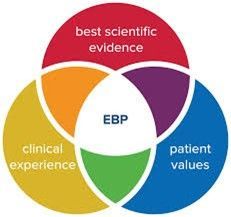Borderline Personality Disorder vs. Bipolar Disorder
A borderline personality disorder is a common occurrence in behavioral health agencies. This disorder, according to the DSM 5, occurs predominantly in females (75%) and between 1.6% to 5.9% of the country’s population. Yet it has many features that are common to those who experience bipolar disorder. So how does a clinician distinguish between them?
First, let’s look at the symptoms of borderline personality disorder. These are individuals who have difficulty with their interpersonal relationships, moods, impulsivity, and self-image. Some of the symptoms are efforts to avoid abandonment; suicidal behavior, gestures, or cutting; feelings of emptiness; low self-image. But a major component is what DSM 5 calls, “a pattern of unstable and intense interpersonal relationships characterized by alternating between extremes of idealization and devaluation.”
Bipolar disorder has two different categories. For bipolar disorder I, the client could have manic episodes plus either hypomania (less severe manic episodes), and/or major depressive episodes. For bipolar II, the client would have the hypomania episode and the major depressive episode. Either way, the client has a history of mood swings that usually are endogenous (biochemical) and exacerbated at times by stressful external events.
If a client experiences mood swings, how does a clinician determine if they should be treated as a client with bipolar disorder or borderline personality disorder? The difference has to do with the mood swing episodes themselves. Whereas a client with bipolar disorder will have mood swings that could last hours or days, a client with borderline personality disorder could have mood swings that last minutes. Also, borderline personality disorders tend to be functions of the environment and exogenous, rather than due to a biochemical imbalance. Finally, clients with bipolar disorder may have strong relationships that are tested during their mood swings, but the cause of the problems is due to the mood swings. Whereas a client who experiences borderline personality disorder continually has interpersonal relationship difficulties. Even if they are in a long-term relationship, it is tested due to their personality, not their moods.
Looking at the differences between borderline personality disorder and bipolar disorder requires the clinician to identify if the behaviors the client shows are long-term (personality) vs. acute (bipolar).
Praxes provides training in personality disorders for clinicians. For more information, please contact us.




